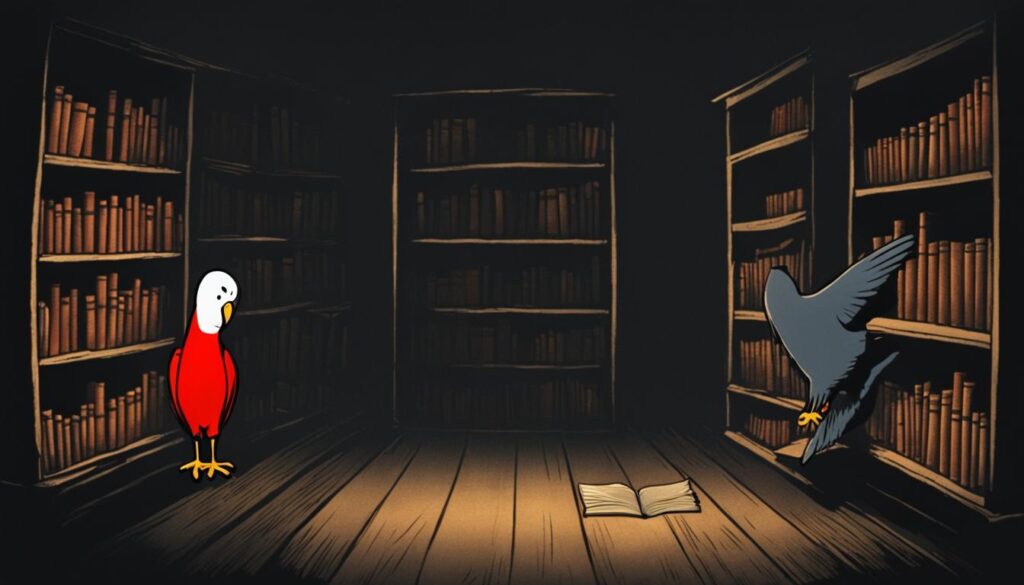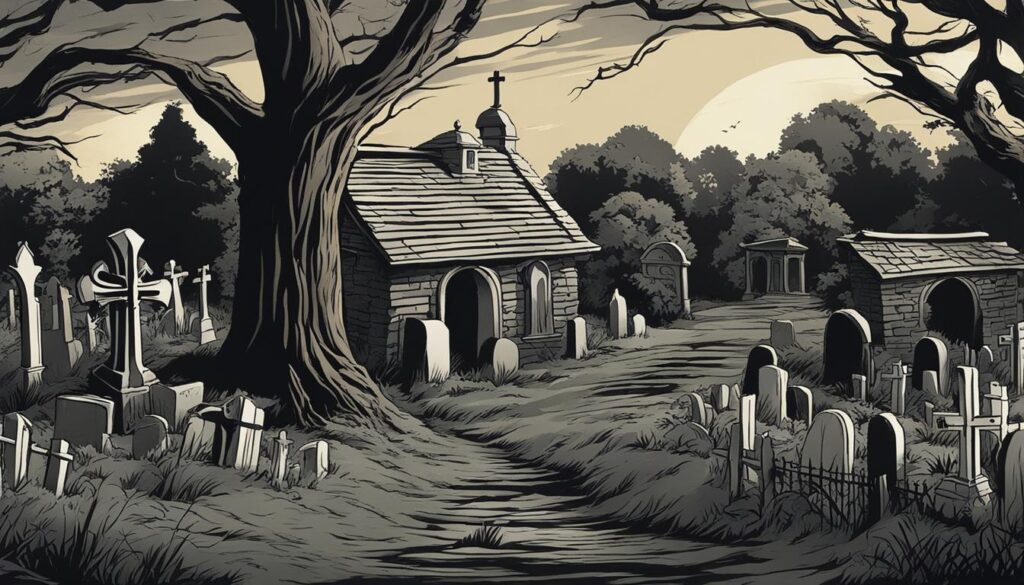If you’re a fan of mystery novels set in historical settings, you won’t want to miss “The Shadow of the Wind” by Carlos Ruiz Zafón. This captivating book is set in post-war Barcelona and follows the story of a young boy who discovers a mysterious book in the Cemetery of Forgotten Books.
The novel is a page-turner that keeps readers on the edge of their seats with its intricate plot and complex characters. Carlos Ruiz Zafón skillfully weaves together themes of love, loss, and redemption in a way that will leave you thinking long after you turn the last page.
In this article, we’ll explore the book’s background and setting in post-war Barcelona, the main characters, and highlight the mystery and intrigue central to the plot. We’ll also examine the book’s critical reception and legacy, inviting you to experience the enigma of “The Shadow of the Wind” for yourself.
Introduction to the Story
Carlos Ruiz Zafón’s “The Shadow of the Wind” takes place in the post-war atmosphere of Barcelona, delving into the secrets of the city’s past through the experiences of its main characters. The plot begins with a young boy named Daniel Sempere discovering a mysterious book in the Cemetery of Forgotten Books, leading him on a thrilling journey to uncover the truth behind its author and his tangled past.
The main characters of the story are:
- Daniel Sempere, the protagonist, who becomes obsessed with unearthing the truth about the book and its elusive author.
- Julian Carax, the author of the book, whose tumultuous life serves as the backbone of the story.
- Fermín Romero de Torres, a colorful and charismatic character who becomes Daniel’s unlikely ally in his search for the truth.
- Beatriz Aguilar, a strong-willed young woman who captures Daniel’s heart and helps him along the way.
Together, these characters take the reader on a journey full of twists and turns, as they unravel layers of secrets and uncover shocking revelations about Barcelona’s past. The book is a thrilling mystery, full of enigmas and suspense, that keeps readers on the edge of their seats from beginning to end.
“A stunning literary thriller in the tradition of Umberto Eco. The Shadow of the Wind is ultimately a love letter to literature, intended for readers as passionate about storytelling as its young hero.”
Setting in Post-War Barcelona
The Shadow of the Wind takes place in post-war Barcelona, a city that had experienced a remarkable transformation after the Spanish Civil War. The war left the city in ruins, and it took several years to rebuild the damaged infrastructure and restore normalcy.
The historical context of this period plays a crucial role in shaping the story’s atmosphere and backdrop. The post-war atmosphere is palpable throughout, and Carlos Ruiz Zafón does an excellent job of explaining the impact this era had on every character’s life.
The city’s resilience in the face of loss, destruction, and economic upheaval is central to the story’s themes and motifs. It underscores the spirit of the characters and their determination in overcoming personal challenges. Additionally, the contrast between the beauty and darkness of Barcelona reflects the characters’ journeys, as they navigate both the light and shadow in their quest for truth and redemption.
The Cemetery of Forgotten Books
In “The Shadow of the Wind,” the concept of the Cemetery of Forgotten Books acts as a powerful literary theme, revolving around a secret library with an unknown location that collects books that have been forgotten by the world. This place is a sanctuary where select individuals are given the opportunity to discover these books and give them a second chance, reviving them from obscurity and preserving them for posterity.
The secret library is a central element of the plot, and each character’s journey is intimately tied with the books they discover and their significance. For example, the protagonist, Daniel Sempere, comes upon a copy of The Shadow of the Wind by Julián Carax, a book that will change his life forever and lead him down a path of mystery and intrigue.
The Cemetery of Forgotten Books represents the power of literature and its ability to transcend time and connect people across generations. It also serves as a metaphor for the importance of preserving the written word and the enduring impact it can have on humankind.
“Every book, every volume you see, has a soul. The soul of the person who wrote it and of those who read it and lived and dreamed with it. Every time a book changes hands, every time someone runs his eyes down its pages, its spirit grows and strengthens.” – Carlos Ruiz Zafón, The Shadow of the Wind
Mystery and Intrigue
The Shadow of the Wind is a novel shrouded in mystery and intrigue. From the very first page, readers are drawn into a labyrinthine plot filled with secrets, enigmas, and suspenseful elements. The author, Carlos Ruiz Zafón, weaves a complex web of characters and storylines that are ripe for exploration and interpretation, keeping readers engaged from beginning to end.
One of the central mysteries in the book is the “Cemetery of Forgotten Books,” a secret library that is revealed to the protagonist, Daniel, by his father. This mystical place sets the stage for a journey filled with twists and turns, as Daniel attempts to uncover the secrets of the books within it. The enigma surrounding the library and its contents only adds to the intrigue of the story, keeping readers guessing until the very end.
Zafón’s masterful storytelling techniques add layers of suspense and complexity to the narrative, ensuring readers are kept on tenterhooks throughout the book. The characters themselves are far from one-dimensional, each with their own secrets and motivations that contribute to the overall mystery of the story.
“Books are mirrors: you only see in them what you already have inside you.”
This quote from the book highlights the layered nature of the plot and the importance of interpretation in unravelling its mysteries. The intrigue and enigmas in The Shadow of the Wind offer much to the curious reader willing to dive into its depths.
Character Development
In “The Shadow of the Wind,” Carlos Ruiz Zafón presents a cast of complex and dynamic characters, each with their own motivations and personalities. The protagonist, Daniel Sempere, is a young boy who becomes obsessed with uncovering the secrets surrounding the writer Julian Carax. Over the course of the story, Daniel matures and develops a deeper understanding of himself and the world around him.
The antagonist, Inspector Francisco Javier Fumero, is a corrupt police officer who will stop at nothing to prevent Daniel from revealing the truth. Fumero is a formidable opponent, and his actions have a profound impact on the other characters in the story.
Zafón’s character arcs are a defining feature of the book, and he masterfully weaves together the relationships and conflicts between the characters, building to a stunning conclusion. The transformation of the characters throughout the story is a testament to Zafón’s storytelling abilities and results in an emotionally resonant and satisfying read.
Key Takeaways:
- The main characters in “The Shadow of the Wind” are multi-dimensional and evolve throughout the story.
- Daniel Sempere is the protagonist, and Inspector Francisco Javier Fumero is the antagonist.
- The character arcs are an essential part of Zafón’s storytelling, building to a compelling conclusion.
Themes Explored
The Shadow of the Wind is a story that explores various themes, including love, loss, and redemption, all of which play a pivotal role in the characters’ journeys. Carlos Ruiz Zafón masterfully weaves these themes into the plot, creating a complex and engaging narrative that captivates readers.
“Every book, every volume you see here, has a soul. The soul of the person who wrote it and of those who read it and lived and dreamed with it.”
Love serves as a driving force in the story. Love takes on different forms, from romantic love to platonic love. Through love, characters experience both joy and sorrow, and their choices and actions are often influenced by their emotions. For instance, the relationship between Daniel and Bea is a testament to the power of romantic love, and how it can withstand challenges and obstacles.

Redemption
Redemption is another central theme of the story. Characters are plagued by past mistakes, and they seek redemption for their actions. Zafón shows how the road to redemption is often long and difficult, but it is also necessary for personal growth and healing.
Loss
Loss is also a recurring theme throughout the book. Characters experience different types of loss, be it the loss of a loved one, a dream, or an opportunity. The theme of loss underscores the fragility and impermanence of life, and how it can impact individuals in profound ways.
Zafón’s exploration of these themes adds depth and complexity to the story. It makes readers reflect on their own experiences with love, loss, and redemption and how these themes are intertwined with the human condition.
Writing Style and Narrative Techniques
Carlos Ruiz Zafón’s writing style in “The Shadow of the Wind” is characterized by its richness and complexity, hovering between realism and romanticism. The author’s refined prose evokes vivid imagery and transports the reader to an enchanting world of old Barcelona. Zafón employs an intricate narrative structure, where one story unfolds within another, cleverly weaving together different timelines and perspectives to create a captivating web of intrigue and mystery.
The book’s most distinctive feature is the way it draws on classic narrative tropes, while constantly subverting them. Zafón deftly plays with the reader’s expectations, weaving a complex and multi-faceted plot. The characters are all intricately portrayed, with hidden depths and motivations that keep the reader guessing. Zafón’s storytelling techniques build up suspense until the thrilling climax, keeping the readers on edge and guessing until the very end.
The Cemetery of Forgotten Books, the mystical library at the heart of the novel, serves as both a setting and a metaphor for the art of storytelling itself. In many ways, “The Shadow of the Wind” is a celebration of literature, with Zafón using the art of writing to explore the nature of truth and the power of language. The novel alternates between high drama and introspection, making it a true masterpiece of 21st-century literature.
Critical Reception
Since its publication in 2001, “The Shadow of the Wind” has garnered widespread acclaim and earned numerous awards. Book reviews have praised Carlos Ruiz Zafón’s writing style, character development, and intricate plot.
“Ruiz Zafón is a master storyteller and “The Shadow of the Wind” a spellbinding and incredibly powerful novel. Passionate, moving and beautifully written, once you have read it, you will understand why it has become one of the best-loved books in the world, and why it was made into a major motion picture.”
-The Guardian
The book has been translated into over 40 languages and has sold over 15 million copies worldwide, solidifying its place as a contemporary classic. In 2004, it won the Euskadi de Plata Award for Best Spanish Language Novel, and in 2005, it was awarded the Barry Award for Best First Novel by an American author.
The critical reception of “The Shadow of the Wind” highlights its cultural significance and lasting impact on readers. Its popularity has sparked a literary tourism trend, with visitors flocking to Barcelona to see the locations where the story takes place. The book’s success has also paved the way for other novels in the Cemetery of Forgotten Books series.
Legacy and Cultural Impact
Carlos Ruiz Zafón’s “The Shadow of the Wind” has become a cultural phenomenon, leaving an indelible mark on literature and popular culture. The book’s cultural significance stems from its ability to capture the essence of post-war Barcelona and its people, making it a popular read both in Spain and beyond.
One of the ways in which the book has influenced literature is by inspiring readers to explore the beauty of Barcelona’s Gothic Quarter, where much of the action takes place. Moreover, the Cemetery of Forgotten Books has become a literary theme in its own right, with various authors using it as inspiration for their own works.
A testament to its lasting popularity, “The Shadow of the Wind” has been translated into over 40 languages, selling millions of copies worldwide. It has also received numerous awards, including the 2004 Planeta Prize, the 2005 Euskadi Literature Prize, and the 2005 Barry Award for Best First Novel.

“The Shadow of the Wind is a hymn of praise to all the joys of reading, to the thrill of the bookshop, and to the knowledge that vicarious experience through literature can offer.” – The Independent
Key Takeaways
- The book’s cultural significance lies in its representation of post-war Barcelona and its people.
- The book has had a significant influence on literature, inspiring readers to explore Barcelona’s Gothic Quarter and using the Cemetery of Forgotten Books as a literary theme.
- It has achieved lasting impact, receiving numerous awards and being translated into over 40 languages, proving its popularity among readers worldwide.
Conclusion
In conclusion, “The Shadow of the Wind” by Carlos Ruiz Zafón is a captivating novel set in post-war Barcelona. The book’s mysterious plot, intriguing characters, and haunting themes of love, loss, and redemption have made it a beloved classic. Zafón’s literary style and storytelling techniques contribute to the novel’s overall impact, making it a must-read for book lovers.
The book has received critical acclaim and numerous awards, earning its place as a timeless masterpiece. Its lasting cultural impact is evident in its popularity among readers and its influence on popular culture.
If you haven’t experienced the allure of “The Shadow of the Wind” for yourself, we highly recommend that you do. It is an unforgettable journey that you won’t regret taking.



